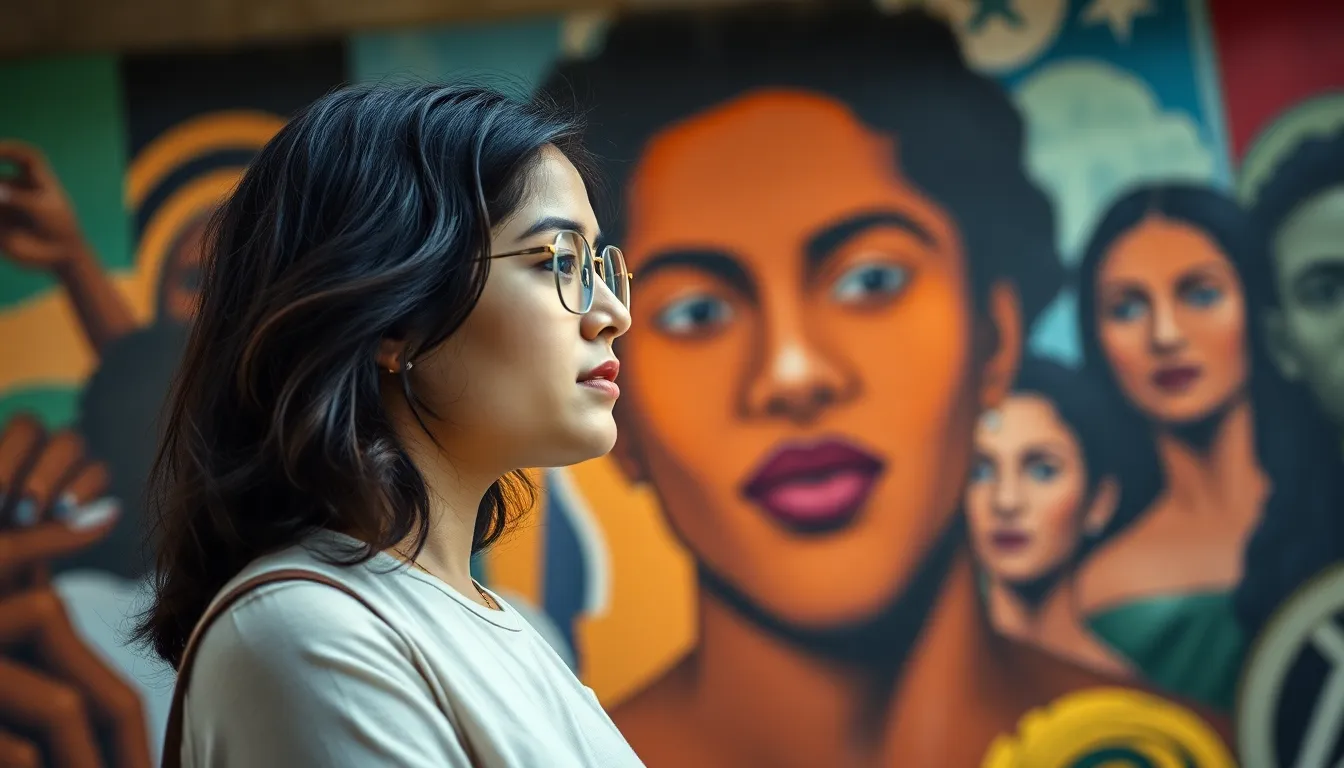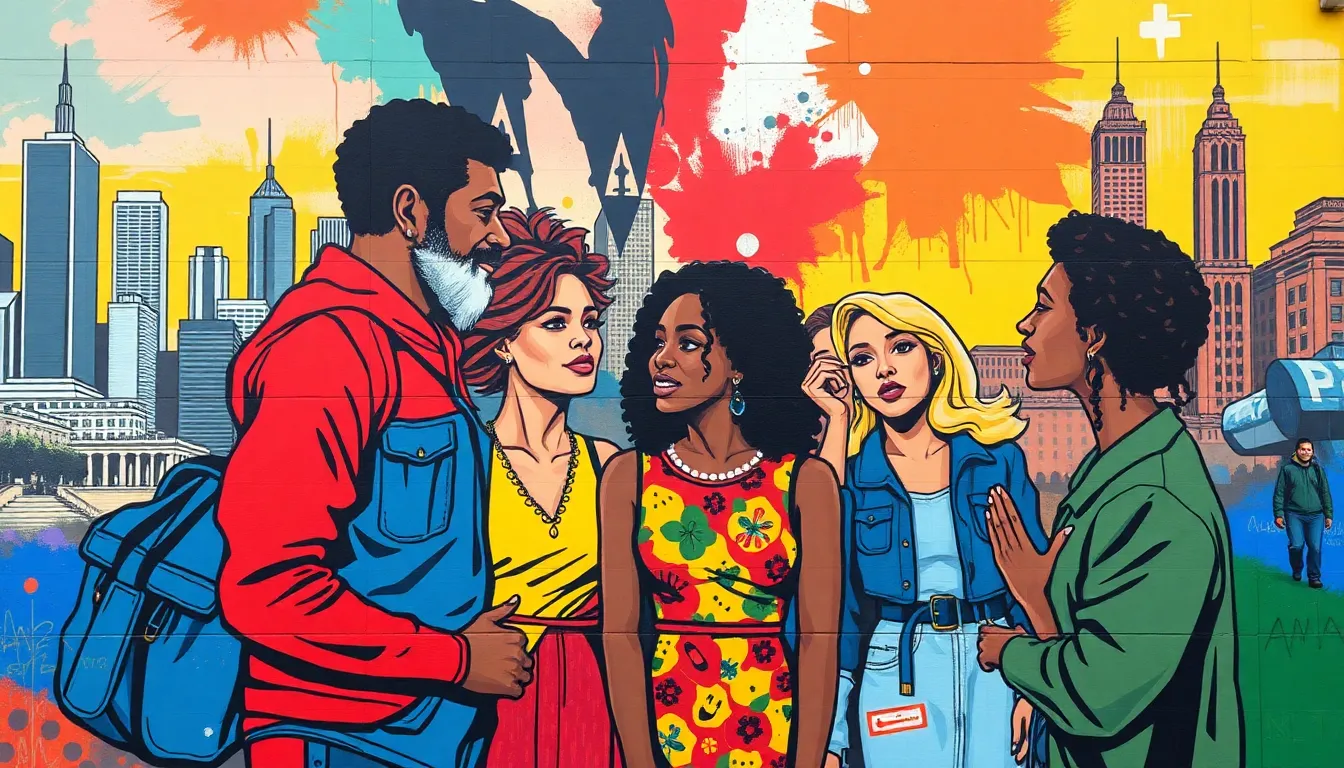Table of Contents
ToggleIn a world overflowing with memes, tweets, and viral videos, social commentary has become the modern-day soapbox for anyone with an opinion and a Wi-Fi connection. It’s a colorful tapestry of voices, each thread weaving together humor, critique, and sometimes a sprinkle of absurdity. Whether it’s a satirical cartoon or a thought-provoking blog post, this art form shines a spotlight on society’s quirks and flaws, making us laugh while nudging us to think.
But why should anyone care about social commentary? Well, it’s not just about chuckling at the latest meme; it’s about engaging with the world around us. It challenges norms, sparks conversations, and can even inspire change. So grab your favorite snack, sit back, and dive into the vibrant realm of social commentary—where laughter meets insight and every opinion counts.
Understanding Social Commentary
Social commentary conveys societal critiques through various mediums, prompting reflection and dialogue. It blends humor and insights, inviting audiences to engage with pressing issues.
Definition and Purpose
Social commentary includes expressions that scrutinize social structures, norms, and behaviors. Its primary purpose lies in raising awareness and stimulating discussion about societal problems. Creators often utilize humor or irony to deliver their messages, facilitating engagement. By combining entertainment with critique, social commentary encourages audiences to question their surroundings and consider alternative perspectives. It plays a crucial role in shaping public discourse, fostering empathy, and inspiring action.
Historical Context
Historical roots of social commentary trace back to ancient civilizations. Writers like Aristophanes and Juvenal used satire to critique political leaders and societal values. Through the ages, this form of expression evolved, adapting to cultural shifts. In the 20th century, new mediums emerged, including television, film, and literature, enabling broader reach. Artists and creators began addressing civil rights, war, and inequality through their work. This evolution reflects society’s changing concerns, making social commentary a vital component of cultural dialogue.
Forms of Social Commentary


Social commentary manifests in various forms, each offering unique insights into societal issues. Literature, film, television, and visual arts serve as powerful mediums for critique and reflection.
Literature
Literature captures complex societal dynamics through poetry, novels, and essays. Classic writers like George Orwell and Mark Twain effectively employed satire to expose injustices and challenge norms. Contemporary authors, such as Chimamanda Ngozi Adichie, tackle themes like gender and race, influencing public conversations. They use narrative techniques that enable readers to engage critically with societal critiques, often prompting them to reconsider their own beliefs and biases.
Film and Television
Film and television serve as compelling platforms for social commentary, often reflecting and shaping cultural narratives. Documentaries like “13th” provide deep dives into systemic racism, while scripted series such as “The Handmaid’s Tale” address issues of power and gender. Directors utilize storytelling to elicit emotional responses and spark discussions about pressing societal concerns. Shows like “Black Mirror” explore the implications of technology, prompting audiences to question the intersection of society and innovation.
Visual Arts
Visual arts present social commentary through paintings, installations, and photography. Artists like Banksy leverage street art to provoke thought about political and social issues. Installations, such as those by Ai Weiwei, challenge viewers to confront human rights abuses. Photographers like Dorothea Lange captured the struggles of marginalized communities during the Great Depression, creating lasting impacts on public awareness. Each piece often serves as a dialogue starter, encouraging audiences to reflect on their surroundings and act toward change.
The Role of Social Commentary in Society
Social commentary shapes societal norms and influences collective attitudes. It critiques prevailing beliefs and often sways public opinion by heightening awareness about critical issues.
Influencing Public Opinion
Social commentary plays a crucial role in shaping public opinion by presenting diverse perspectives on key topics. Voices from different mediums highlight social injustices, guiding discussions that can transform perceptions. For instance, viral social media posts, impactful documentaries like “13th,” and thought-provoking literature by authors such as Chimamanda Ngozi Adichie effectively challenge conventional views. These platforms create spaces where individuals engage with and reflect on societal problems. They spark dialogues that encourage people to reconsider their beliefs, potentially leading to shifts in attitude over time.
Fostering Social Change
Social commentary functions as a catalyst for social change by inspiring audiences to take action. Artists, filmmakers, and writers use their platforms to shine a light on pressing societal issues such as inequality and discrimination. Documentaries and series often stimulate conversations about topics that require urgent attention. Through humor and critique, creators challenge the status quo and encourage collective efforts towards progress. The work of artists like Banksy and Ai Weiwei not only captivates but also motivates viewers to advocate for change. Transformative movements emerge from these expressions, highlighting the power of social commentary as a tool for societal improvement.
Notable Examples of Social Commentary
Social commentary has manifested in various impactful ways throughout history. Both classic works and contemporary voices play significant roles in shaping social discourse.
Classic Works
Classic literature provides insight into societal issues through the lens of satire and critique. George Orwell’s “1984” warns against totalitarianism while exposing government manipulation. Mark Twain’s “The Adventures of Huckleberry Finn” critiques racism and social injustice in 19th-century America. Aristophanes, the ancient Greek playwright, used comedy to dissect political corruption and societal norms. These influential writers prompted readers to reflect on their values and question the status quo. By addressing deep societal flaws, these classic works remain relevant, fostering ongoing discussions about morality and justice.
Contemporary Voices
Contemporary voices continue to challenge societal norms through various mediums. Chimamanda Ngozi Adichie’s “We Should All Be Feminists” captures the complexities of gender in today’s world. Ta-Nehisi Coates’ “Between the World and Me” confronts systemic racism and urges reflection on identity. Documentaries such as “13th” expose issues surrounding mass incarceration and racial inequality in America. Television series like “The Handmaid’s Tale” provoke conversations about women’s rights and totalitarianism. Each of these works encourages critical engagement, inspiring audiences to advocate for change in their own communities. Social commentary has evolved, yet it remains a powerful tool for inspiring reflection and dialogue.










